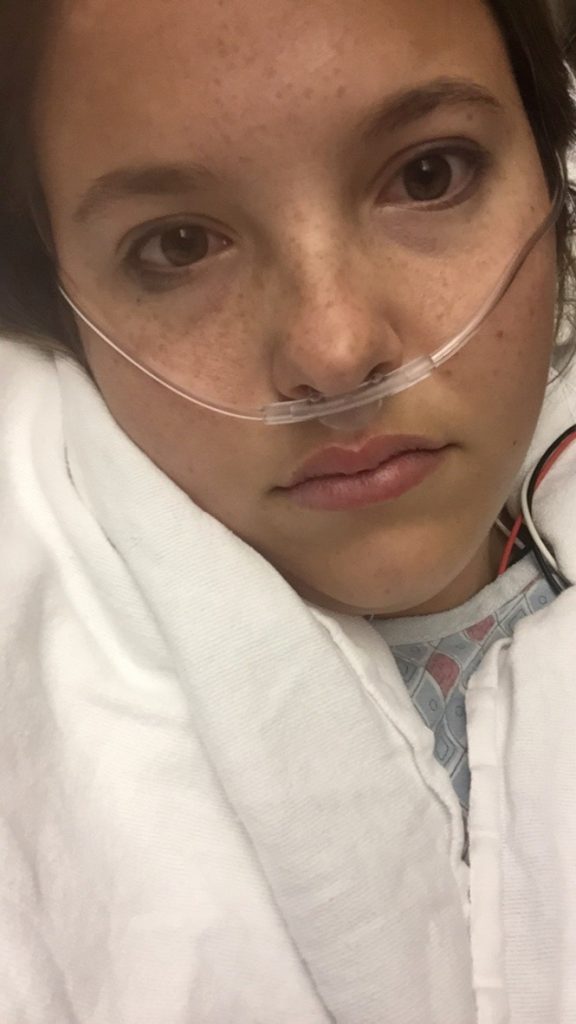The term “invisible illness” has been thrown around a lot lately. Social media has raised awareness for chronic illnesses that are not visible to the naked eye. Invisible illnesses can be anything from mental illness to various forms of cancer. In reality, most illnesses are largely invisible, but that does not mean they are any more understood.
• What is Ehlers-Danlos Syndrome?
• What Are Common Ehlers-Danlos Syndrome Symptoms?
Having an invisible illness means always looking like your healthy counterparts. It means you never look how you feel. It means you and your illnesses are often doubted. I often hear the dreaded comment, “But you look so good!” While I recognize that the comment is mostly well-intentioned, I never know how to exactly respond. I may look healthy, but on the inside my body is crumbling to pieces. My “healthy”-looking body has endured over 25 surgeries, suffered through unimaginable pain and constantly fails me. Frankly, I do not care if I look healthy because I do not feel healthy. What is the point in telling me how good I look? Is that supposed to make up for my pain? In my opinion, telling a chronically ill person they look good is an ignorant comment.

Invisible illnesses do not adhere to the stereotypes of what it “looks like” to be sick. In reality, sick people come in all forms. My disappointment in the “but you look good” comment stems from the fact that it perpetuates the stereotypes and does nothing to progress people’s understanding of invisible illnesses. When I was 15, I suffered from a bout of alopecia where I lost all the hair on the top of my head — that was the first time my physical appearance changed since diagnosis. In a sense, I was relieved; what I was feeling inside began to match what I looked like outside. Without the hair on the top of my head it was clear that something was wrong. But the hair grew back and my physicality went back to looking healthy. There are times where I wish there was some sort of physical indication that I was sick, and I get mad at myself for thinking that because then I am buying into the idea that looking sick is indistinguishable from feeling sick.

I think many laypeople and medical professionals alike have questioned those with invisible illnesses. A common experience among invisibly ill people is the confrontation about disability placards. Personally, I have been confronted multiple times about the use of my disability placard. Both times I did not find the words to defend myself and educate the ignorant commentator. All I could muster up was the simple affirmation that the placards are mine. Someday, I hope to eloquently speak words of defense and education. Someday, I hope these comments are a rarity.
While invisible illnesses can be difficult for laypeople to comprehend, doctors and medical professionals should be used to the concept. Unfortunately, I have learned this is not the case. When I speak to a healthcare professional, I constantly feel like I have to prove myself. I have to “show” the doctor how sick I am. I have to describe every ache and pain so the doctor can accurately treat me. Time after time, invisible illnesses prove to be misunderstood. When I finally found medical professionals that take me and my illnesses seriously, I felt validated, but I also continue to fear the doubt that may come. Whenever I have a “visible” symptom, I make sure to document it and show it to my doctor. I use the pictures to prove that the pain is real — that the pain is not psychosomatic. I constantly feel the need to validate my illnesses and that is not fair. I should not have to hesitate about using my disability placard to avoid being questioned. I should not have to wish that I had a physically-altering symptom in order for people to believe that I am ill.
My intention is not to bash people who may make the said comments or think in a certain way. My hope is to help expand people’s understanding of a sick person. There do not have to be physical signs or symptoms for a person to be sick. A chronically ill person who looks healthy is not less ill than someone with physical signs of illness. And to those who do live with invisible illnesses: do not let someone make you feel like you need to prove yourself because that is not worth your time and energy. Those who need proof are close-minded and not people who will be supportive of your journey; however, it is imperative to fight back against the ignorance. Continue to challenge people’s thoughts and raise awareness for invisible illnesses.

